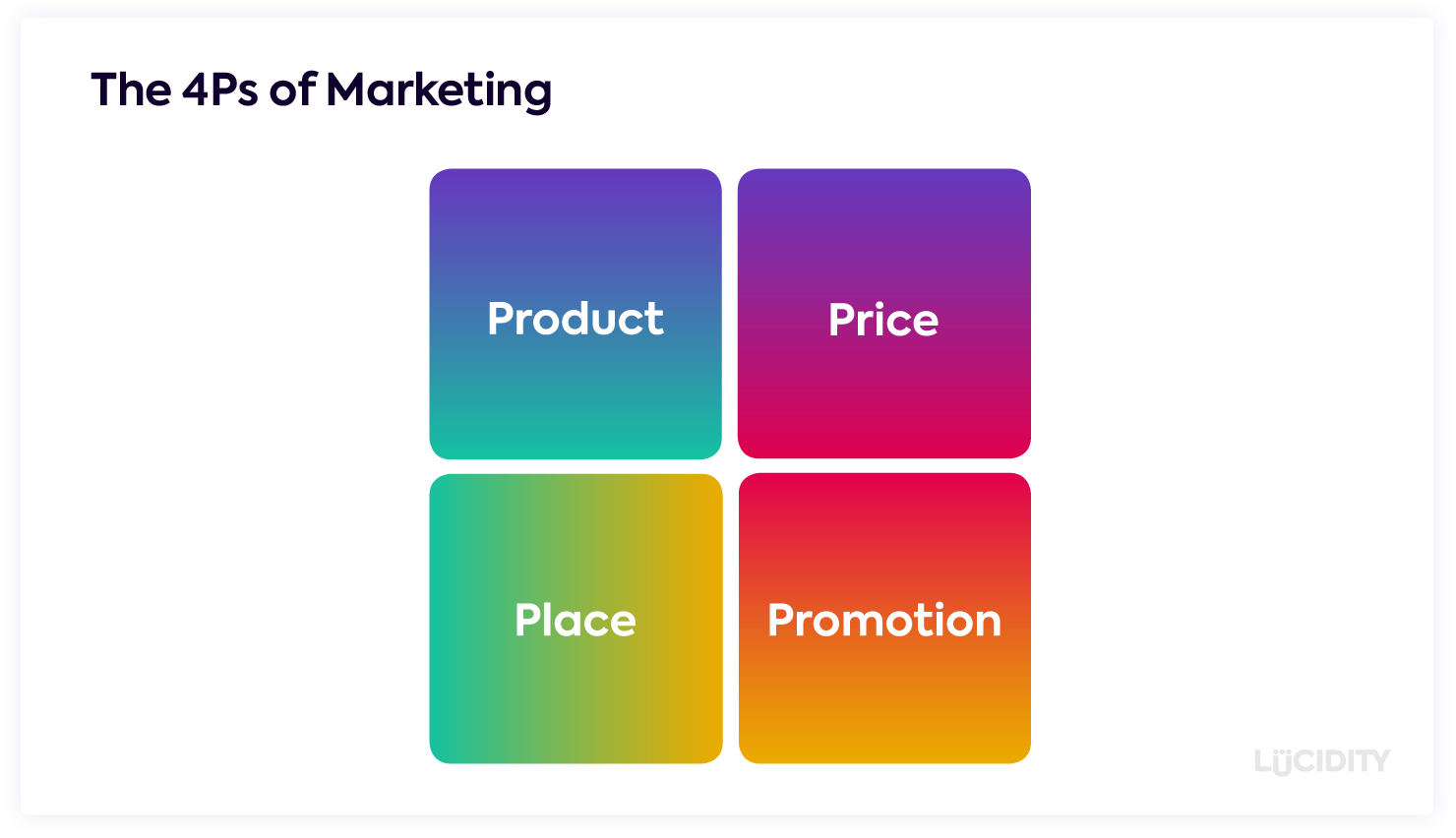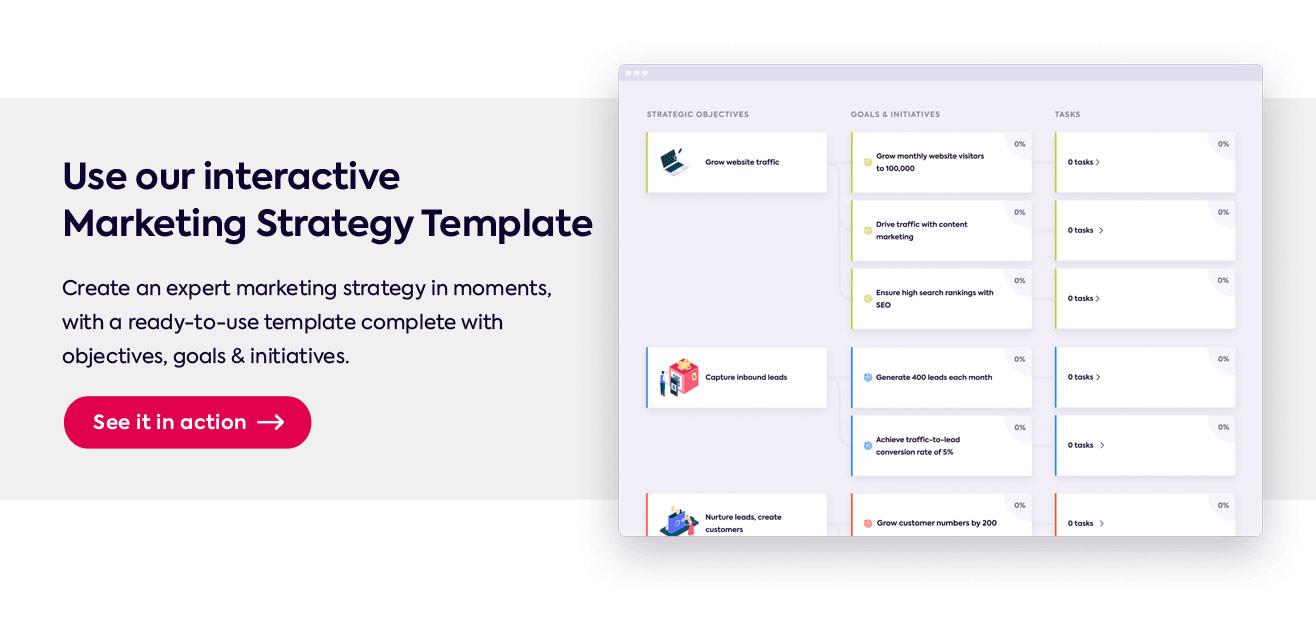Anyone who has read a marketing textbook or taken any sort of academic marketing course will know The 4Ps of Marketing well. They are a fundamental part of marketing theory that have been around for 70 years. But in our world of digital marketing, data and automation are they still relevant and valuable?
The answer is yes! The 4Ps of Marketing (plus an additional 3 Ps which we’ll come to later) should still form the fundamental core of any good marketing strategy. Before you start thinking about advanced digital tactics, or smart targeting options, you first need to establish a firm understanding of your 4Ps so you have the right grounding to make the best decisions about your marketing plan.
So whether you have been ‘classically trained’ as a marketer and sat through lectures on the 4Ps, or whether you’ve trained on the job and haven’t formally read the theory, every marketer should brush up on the Ps and ensure they are covering the fundamentals that will help produce a solid marketing strategy.
What are the 4Ps of Marketing?
The 4Ps of Marketing, often referred to as the Marketing Mix, are Product, Price, Place and Promotion. Consideration of these four elements should form the basis of any good marketing strategy. They are used to define the core aspects of a business’ product or service offering and how it will be effectively promoted and sold to customers.
Knowing your 4Ps will give you the fundamental understanding everyone in the business should have about what you are selling, to whom and how. These will then form the core pillars of your marketing strategy. They are very much the starting point.
The 4Ps of Marketing are:
- Product: What are you selling? How does it meet the needs of your customers?
- Price: For how much? What is the right pricing strategy for us and how does that impact customer perception?
- Place: Where? Where are our products sold, and where will we advertise them?
- Promotion: How? How will we get people to buy? What messages and tactics will you use? How will you differentiate from the competition?
And in more recent years three more Ps have been added: People, Process and Physical Evidence. Today we’ll start with the original four though and you can check out our forthcoming article on the 7Ps of Marketing to find out more about the final three.
History of the 4Ps
The concept of the Marketing Mix was devised by Harvard advertising Professor Neil Borden back in the 1950 and 60s. He wrote an article that demonstrated how companies could use a mix of advertising tactics to appeal to consumers. E. Jerome McCarthy then popularized this idea and distilled Borden’s elements into the 4Ps of Marketing that we still use today.
What is Product in the 4Ps of Marketing?
What are you selling? Is it a physical product, a digital product, a service? This is just about being crystal clear about what it is your company is offering to its customers. It could be a shampoo, a software package, a cleaning service or consultation – whatever it is you are offering people is your Product.
Then you need to think about that product or service in detail and define exactly what how it helps your customers.
Ask yourself…
- What are you selling?
- Who is it for?
- What makes it really good and unique?
- How does it help your customers?
What is Price in the 4Ps of Marketing?
As the name suggests, this P is all about how much you charge for your product or service. This isn’t easy to get right, and, in fact, we’ve written extensively on how to go about setting your pricing strategy (check out our library of Pricing Strategy guides for more info).
There are many things to consider when you are thinking about pricing:
- What do your competitors charge?
- What are the costs of producing your product or service?
- What is the perception of value your customers have about your product/service?
- What price sensitivities exist in the market already? What would be considered too expensive and too cheap?
- What brand perception do you want to encourage in the market?
Another important aspect of the Price P for your marketing strategy is about discounts and price-based incentives. These can be powerful promotional tools in the right context, so when considering Price in your 4Ps strategy you should think about if promotions are right for you and how you would use them. These could be things like..
- Money off a first order
- Discount when referring a friend
- Discount for signing up/buying within a limited time period
- Discount for multiple purchases
- Win-back discounts for cart abandonment or previous customers or trialists
- Discount for signing up to a subscription for an annual period
If considering a discount strategy, always think about how it may impact your brand perception. Also think about the conventions in your market, the customer expectations and the impact on revenue. Then remember to track the results for each price promotion – look carefully at your data and make sure you know how effective it is at driving sales and growing revenue.
What is Place in the 4Ps of Marketing?
Place in the 4Ps of Marketing refers to where you sell and market your product or service. It’s where people can find your product and the location (be it physical or digital) from which they can acquire it. It’s also where they came to know about your product or service – where you are marketing it to your potential customers.
As with all the Ps, your target customers should be the focus of your decision making here. Your Place should be their place. Make sure you’re putting your product and messaging where they are, and not expecting them to come to you. The easier you can make it for someone to get hold of what you’re selling the more you will sell.
Questions to ask when considering Place:
- Where are your target audience already hanging out? Be it physical or digital
- Where will you market your product? (hint, the answer to 1 and 2 should be the same!)
- Once you’ve convinced someone to buy, where can they get your product/service? (ideally this isn’t a million miles away from the previous answer)
- Will you sell directly to your consumers or through a third party?
- Where are your competitors?
- How will your product/service be distributed?
Place could include:
- The stores your product is sold in
- The locations of your physical store/premises
- The physical location of your product in-store (merchandising)
- The social media platforms you’re on (both for promotion and direct e-commerce)
- Your website
- Your product positioning on your website or the sign-up process
- Product placement on TV shows or films
What is Promotion in the 4Ps of Marketing?
Once you have defined, refined and optimized the first three Ps and you have a great product that really offers value, at the right price for your audience and positioned in the best places, then you’re ready to promote it and get people’s attention.
Often, you’ll find that Place and Promotion crossover a lot, especially when it comes to online locations. You may have chosen Facebook as a great place to have an e-commerce presence and sell your product, and it might also be the main channel for your promotion.
When considering your Promotion strategy, possibly the first question to ask is to what extent there is an existing need for your product/service or are you going to need to create that need in your ideal customers? Another consideration is whether you ideal customers are searching online for related things that mean you can position your product so you’re easily found, or whether you need to identify who would benefit from your product and proactively target them. This is really the difference between an inbound marketing strategy and account-based marketing. ABM might be the best approach if your product or service is a very expensive B2B enterprise solution, and inbound might be more appropriate if you’re selling holidays. Or, quite commonly, both might be used together to create the perfect mix.
You need to think about the right promotional channels to get your product or service noticed by the right people. Those channels might include:
- SEO
- Search advertising
- Social advertising
- Social media
- PR
- Events
- Print advertising
- TV/radio advertising
- Content marketing
- Video marketing
- Affiliate marketing
- Telesales
Keep Revisiting
Once you have established your 4Ps marketing strategy, do not think the job is done forever. No marketing strategy should ever be static. You need to always be looking to refine and adapt your strategy as you learn more and as your market shifts and changes.
Changes in Product
New understanding of your customers might mean you have to shift your Product thinking. Maybe you have seen that one particular feature of your product is getting used far more than any other and that leads you to realize that you’re actually solving a slightly different problem to the one you set out to solve. In this case, your Product thinking would need to adapt and your messaging change accordingly.
Changes in Price
Your Price strategy is certainly something that should never stand still. You might think your product can support a higher price point after a few years of establishing your brand recognition and reputation in the market. Or you might need to drop prices if there’s a significant economic impact on your customers caused by external market factors.
Changes in Place
Similarly, with Place, you should always be monitoring and adjusting where you sell your product. Imagine if newspapers just stuck firmly to only selling their product from newsstands and failed to recognize the consumer desire to read content online. It’s important to stay abreast of where your consumers are and where they want to get your product and adjust accordingly.
Changes in Promotion
And finally, your Promotion strategy should be an ongoing work-in-progress. Marketing tactics should never be set in stone, you should always be testing, analysing results and optimizing or changing accordingly. Run a promotion, see if it works, do more if it does and try something else if it doesn’t.
Final words
So, we hope you’ll agree that that was a useful revision of some very important marketing fundamentals. Sitting down and defining your 4Ps is a solid place to start when devising your marketing strategy and continuing to revisit them will ensure your plan stays relevant and effective.
Good luck with your marketing strategy!














